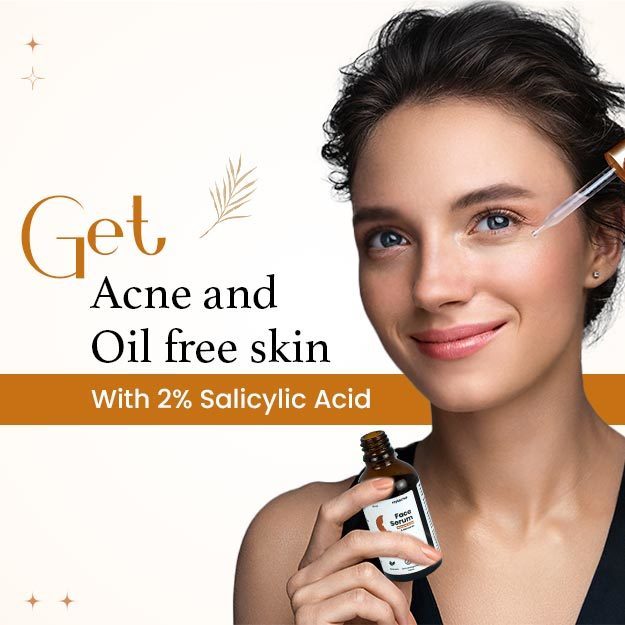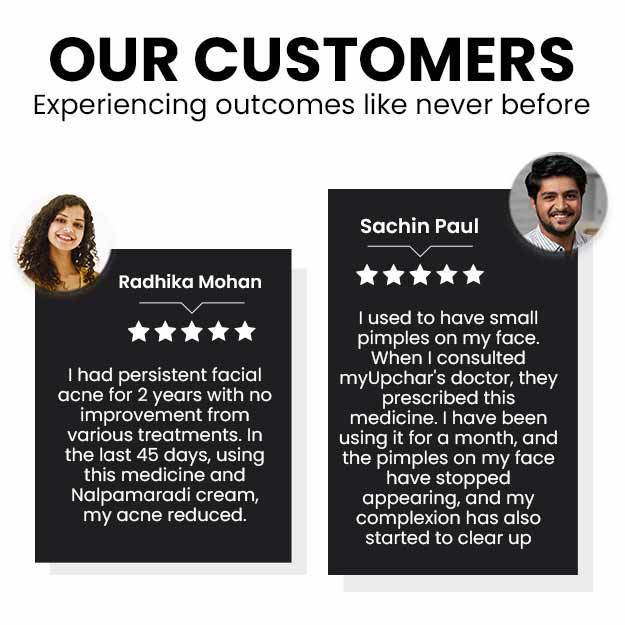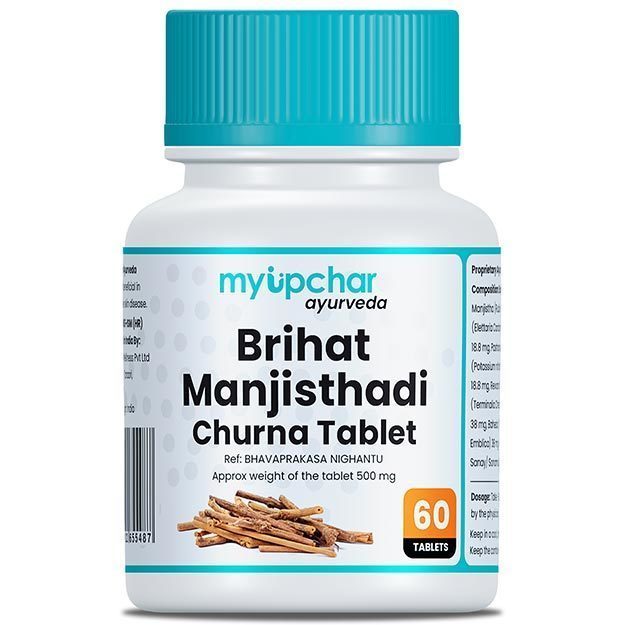A flawless skin is a dream which seems distant when you notice dark spots on your body especially your face and arms. The presence of multiple dark spots on one or all the parts of your body is known as pigmentation or hyperpigmentation. It can happen to anyone regardless of gender, age, and sex.
The most common cause of pigmentation is prolonged exposure to sunlight. However, there are various other causes that can cause pigmentation in your body such as hormonal changes, pregnancy, antibiotics (tetracyclines), hair removal, allergy, contraceptive pills, genetic defects, vitamin deficiency (vitamin B12 and folic acid), dermatitis, chemical or physical injury, etc.
There are a lot of home remedies for pigmentation that you can try at home, however, any experiment with your skin should be avoided especially when your condition is serious. Although it is always recommended you see a doctor to rule out serious underlying medical conditions, here are a few things that you can try to get rid of pigmentation at home.
All the ingredients mentioned below are natural and can be used as a part of your routine skin regime, it is always better to do a patch test on your forearm to see if the remedy suits your skin type. We advise you not to use any remedy which causes redness, itching or burning sensation on doing the patch test because it shows that your skin is sensitive to the ingredients used in the remedy.
- Home remedies for pigmentation
- Fruit masks for pigmentation
- Herbal masks for pigmentation
- Foods to eat for pigmentation
- How to remove pigmentation: tips
Home remedies for pigmentation
- Raw potatoes
Raw potatoes have an enzyme catecholase which reduces melanin production in your skin. They also contain vitamin C which has good antioxidant properties.
How to use?
You can slice one potato, spray some water on it and rub the affected skin with it in a circular motion. Doing this 2-3 times a day for four weeks will lighten your pigmented skin.
- Apple cider vinegar
Organic acids are those acids which are extracted from living organisms especially plants. A review on the use of organic acid for skin problems suggests that organic acids such as maleic acid, citric acid, oleic acid, etc. are helpful in reducing skin pigmentation. Apple cider vinegar is one such product which is very useful in depigmentation of the skin.
How to use?
Add a cup of apple cider vinegar to an equal amount of water and rinse the pigmented skin with it. Leave it on for 10-15 minutes and rinse with lukewarm water. Do this two times a day for four weeks.
- Red onion
In a study on skin-whitening agents present in red onion concluded that it has the ability to inhibit tyrosinase enzyme and prevent melanin production. Thus it helps in reducing pigmentation.
How to use?
You may either slice an onion and rub it on the pigmented area or blend the onion and squeeze out its juice. Apply this juice once daily on the pigmented skin and leave it for 10 minutes. Rinse with lukewarm water. Do this till you see changes in the affected skin. Make sure you wash your hands after using the onion because you may accidentally hurt your eyes.
- Almonds
Almonds are famous for being a rich source of vitamin E and antioxidants which work like magic on our skin. They are one of the oldest methods used in treating skin problems. An abstract based on the effects of almonds on health says that they have properties which can rejuvenate and soothe inflamed skin and scars as well.
How to use?
You may soak 5-6 almonds overnight and peel their skin off in the morning. With the help of a pestle and mortar, crush them finely and add small amounts of milk till you get a paste-like consistency. Take this paste in clean hands and apply it on the affected skin and leave it for 15 minutes. Wash with lukewarm water. Do this for the next 3-4 weeks.
- Red lentils
Red lentils also have bleaching property and they are effective in lightening your pigmented skin.
How to use?
Soak a bowl full of red lentils overnight. In the morning, you are supposed to blend them to make a paste and add two spoons of milk, half a teaspoon of honey, a and pinch of turmeric. Put this paste on your face and let it stay for half an hour before washing it off. Use this method for a month for visible results.
- Yoghurt
A study on "Effects of Fermented Dairy Products on Skin" which was conducted in 2014 suggested that yoghurt has health benefits on ingestion and is also beneficial when applied on the skin. Hence, this mask will benefit your skin in various ways. Yoghurt moisturizes and lightens the skin and lemon has bleaching and antioxidant properties which helps in lightening the dark spots.
How to use?
You can take two teaspoons of gram flour, one teaspoon of yoghurt or curd, half a teaspoon of lemon juice and a pinch of turmeric. Mix the paste well and apply it on your face for 20 minutes. Wash your face with lukewarm water. Use this mask for four weeks.
Here are some home remedies you can try to reduce pigmentation:
- Green tea
A study published in the Journal of Oxidative Study and Cellular Longevity on Protective Mechanisms of Green Tea Polyphenols in Skin says that green tea has anti-inflammatory and antioxidant properties owing to the presence of flavonoids in it. These catechins inhibit the tyrosine enzyme and prevent melanin formation.
How to use?
Boil a cup of water and add a green tea bag to it. You may also use green tea leaves for the same. After brewing the tea for 1-2 minutes, remove the tea bag or strain the leaves. Drink the green tea every day and dab the used tea bag on the affected area of your skin for a month. Rinse with water.
- Soybeans
A study done to assess the effect of soymilk and soybean extract on depigmentation suggested that consuming these products or applying the soybean extract on the affected area is an alternative natural cure for pigmentation.
How to use?
Drink a glass of soymilk every day or apply soybean extract every day on the skin where pigmentation has occurred. Soybean extract is usually available in the market in drugstores, cosmetic shops, and online shopping websites. Use the product as instructed by the manufacturer. Information on the directions for use, the method of application and the duration for which it should be used is usually provided with the product.
Fruit masks for pigmentation
The following are some fruit masks that can help reduce pigmentation:
- Lemon
A few review articles on honey and lemon for example Traditional and Modern Uses of Natural Honey in Human Diseases, and Citrus fruits as a treasure trove of active natural metabolites that potentially provide benefits for human health provide a clue about their skin benefits. These reviews showed that lemon and honey both have antioxidant, exfoliating, anti-melanogenesis (preventing melanin formation) and anti-inflammatory properties. They help to get rid of pigmentation, reduce inflammation, and make your skin healthy, bright, and glowing.
Read more: How to get glowing skin at home
How to use?
You may use one teaspoon each of honey and lemon juice, mix them well, and dab a cotton with it. After this, use gentle hands to massage the affected area with this cotton using circular motions and leave it to stay there for 15-20 minutes. You may do this two times a day for a period of 3-4 weeks or can also use this on a daily basis because its ingredients are natural.
- Cucumber
Cucumber has antioxidant properties owing to the presence of vitamin A and vitamin C, and carotenes. Zeaxanthin and lutein present in cucumber help in shrinking skin pores, lightening the skin and removing dead skin cells.
Read more: Open pores causes
How to use?
Take fresh cucumber juice and apply it to the affected skin. Leave it on for half an hour then wash and pat dry. Do it once daily till changes in the affected skin are tangible.
- Tomato
Tomatoes are known for their antioxidant properties owing to the presence of lycopene. Lycopene helps in reducing the pigmentation on your skin which happens due to damage by sunlight.
How to use?
You can either blend tomatoes or take tomato puree and mix it with a few drops of olive oil. Apply this paste to the pigmented skin. You are supposed to leave it for 15-20 minutes and wash it off with slightly warm water. You will start seeing changes in 2-3 weeks.
- Avocado
A study done to assess the protective effects of herbs on skin says that avocados are rich in vitamin C, vitamin E and oleic acid, which are effective in protecting the skin against UV rays and reducing skin pigmentation.
How to use?
Grate a slice of avocado and make a smooth paste and apply it on the dark spots twice daily for a month. You may also add some honey and milk to the paste and leave it on the skin till it dries. Rinse it with lukewarm water. Do it once daily for a month.
- Papaya
A study conducted in 2014 said that raw papaya has exfoliating and antioxidant properties, which help in removing the dead skin cells and preventing skin damage. thus aiding in the reduction of skin pigmentation.
How to use?
You may take a three-inch slice of papaya and add half a teaspoon of honey, a pinch of turmeric, a few drops of lemon juice and milk to it. You are supposed to blend them to make a paste and apply it twice daily on the pigmented area. Let the paste stay on the skin for 20 minutes and finally, rinse it with lukewarm water. Do this for at least a month.
- Banana
In the study, "Anti-inflammatory and antioxidant activities of extracts from Musa sapientum peel", it was found that banana is a very good natural exfoliator and antioxidant. It helps in removing dead skin cells. Thus it also helps in gently removing pigmented cells.
How to use?
You can use half a banana (unripe), one teaspoon of honey, and one teaspoon milk to make a creamy paste for your skin. Blend or mash them together so that it stays free of lumps. Wash your hands before applying it on the affected skin. Apply an even layer of this paste and keep it there for 30 minutes. Use this mask for a month to see the results. Gently wash it with lukewarm water and pat dry your skin.
- Mulberry
A study published in the Journal of Clinical and Aesthetic Dermatology on the effectiveness of natural ingredients on hyperpigmentation suggests that mulberry has an active component which not only inhibits the activity of tyrosine but also helps in removing free-oxygen radicals which are responsible for skin damage.
How to use?
Mulberry extract is available as a skin serum with other essential oils. You may refer to the packaging to know the right way of using the product.
- Strawberries
A study published in the Indian Journal of Dermatology says that strawberry contains flavonoids which effectively inhibit synthesis of melanin. Hence, they make strawberry an alternative method to treat skin pigmentation.
How to use?
You may take 2-3 fresh strawberries and mash them well to make a paste. To this, you may add half a teaspoon of honey and mix well. Take this paste in clean hands and apply on the affected skin area. You are supposed to gently massage the skin using circular motions for about 2-3 minutes. After this, let it set on your skin for 15 minutes and wash it off with lukewarm water. Following this, wash your face with cold water to close the skin pores. Use this method for at least a month to see the results.
Herbal masks for pigmentation
- Turmeric
Turmeric is an age-old remedy for numerous skin diseases owing to its ability to help in healing as well as lightening the skin. According to a review based on the effects of turmeric on skin health showed that turmeric has anti-inflammatory, antioxidant, antimicrobial and cancer-preventing properties which help in a lot of skin diseases.
How to use?
Turmeric is used in a number of ways. You may add turmeric to a yogurt mask, lemon juice, honey, milk, fuller’s earth mask, etc. Use any of these masks with a pinch of turmeric every day till you start seeing changes in your pigmented skin.
- Aloe vera
A 2012 study related to the effectiveness of aloe vera in treating pigmentation suggests that aloe vera is helpful in reducing pigmentation. It has an active ingredient called aloin which helps in aggregating and hence reduces the pigmentation in the area where it is applied.
How to use?
You may either buy aloe vera extract from the market or pluck an aloe vera leaf from your garden. Peel it off and extract the aloe vera gel and mix two teaspoons of it with one teaspoon honey. Keep it aside for 10 minutes. Apply this mixture two times a day on the affected skin and leave for 20 minutes. Wash it off with lukewarm water and follow this routine for at least four weeks.
- Sandalwood
A study on sandalwood oil suggested that it is capable of inhibiting the enzyme tyrosinase (an enzyme which converts tyrosine into melanin. Melanin is the pigment produced by our skin.) and helps in lightening the dark spots.
How to use?
You may either use sandalwood powder or sandalwood oil to treat your pigmentation.
Take two teaspoons of sandalwood powder, add a pinch of turmeric, a few drops of olive oil and rose water/ milk to it. Make a paste and put it on the affected skin. Leave it on for 10-15 minutes. Wash it off with lukewarm water. Do this once daily till you see any changes in your pigmented skin.
The following herbal masks may help you reduce skin pigmentation:
- Liquorice
A study done to demonstrate the effects of liquorice extract on pigmentation suggests that this extract has an active component called glabridin which is effective in inhibiting tyrosine and preventing pigmentation. Apart from its depigmentation activity, liquorice is also helpful in reducing the inflammation (swelling) in skin cells.
How to use?
Liquorice is available as creams, gels, and serums in the market. Use them as mentioned on the packaging. You may also make a powder out of dried liquorice roots and use it with rose water to make a paste. With clean hands, apply this paste all over the affected area and let it stay there for 15 minutes. After this, wash it with lukewarm water. Follow this routine for at least a month.
- Saffron
Saffron is an age-old ingredient used in skin lightening. An article, Critical review of Ayurvedic Varṇya herbs and their tyrosinase inhibition effect says that saffron is effective in reducing melanin production and helps in reducing pigmentation.
How to use?
You may add 3-4 shreds of saffron to any of the above-mentioned masks and put it on the affected area as we have previously explained.
Foods to eat for pigmentation
Our skin reflects what we eat. A study, You Are What You Eat: Within-Subject Increases in Fruit and Vegetable Consumption Confer Beneficial Skin-Color Changes, conducted in 2012 suggests that eating a healthy diet with more fruits and vegetables has a direct impact on our skin tone and complexion. Following is a list of things that you can include in your diet to reduce hyperpigmentation:
- Fruits
Certain fruits are rich in vitamin C and antioxidants and are very good for skin such as lemon, orange, strawberry, blueberry, avocado, papaya, banana, grapes, cherries, mangoes, tomatoes, etc. Make yourself a good salad with a variety of these fruits and eat every day. - Vegetables
Vegetables which are rich in carotenoids and flavonoids are helpful in reducing skin pigmentation. These include cucumber, carrots, spinach, red and yellow bell peppers, broccoli, etc. include them in your meals or soups to heal your skin from the inside. - Aloe vera juice
Aloe vera juice is being used for a long time for its medicinal properties which are very helpful for the skin. Drink aloe vera juice alone, or mix it with other juices for a better taste every day. Do not take more than 10-15 mL of aloe vera juice twice a day. - Green tea
Green tea is rich in flavonoids such as catechin which reduce the amount of melanin production. It is good to drink green tea at least twice a day to reduce hyperpigmentation. - Coconut water
Coconut water is very beneficial in rehydrating your body along with adding essential minerals. As your body rehydrates, the skin cells rejuvenate and new cells are also formed. It also helps in the timely shedding of dead skin cells. - Water
Drinking plenty of water everyday flushes out toxins from your body and gives a nice glow to your skin. It also increases the natural cleansing of the skin through sweat and reduces sebum production.
Read more: How much water to drink in a day
How to remove pigmentation: tips
Apart from the abovementioned methods, the following tips may help prevent pigmentation:
- Essential oils
Essential oils have been studied widely for their humongous health benefits. A recent study, Anti-inflammatory and Skin Barrier Repair Effects of Topical Application of Some Plant Oils, shows that a few essential oils can be used to treat pigmentation. These include argan oil, olive oil, coconut oil, lavender oil, rosehip oil, lemon essential oil, etc. These oils can be used alone or in a combination to be applied on the affected skin after dilution. They reduce inflammation, improve healing, and remove free radicals, which are known to damage your skin.
How to use?
Use any one of the above-mentioned essential oils and dilute it with coconut or olive oil by mixing equal quantities of both. You can also add the essential oil to your daily moisturizing lotion or cream. These oils are supposed to be applied to the skin at bedtime to be left overnight. It is advised not to step out in the sun with this oil solution on your skin. This is a very commonly used nighttime skincare routine by a lot of people for a healthy and glowing skin.
- Protect your skin from the sun
Sunscreens are creams or lotions which protect the skin from the harmful effects of UV rays in the sunlight. Using a sunscreen with high SPF prevents tanning and pigmentation which occurs due to UV rays. A sunscreen with SPF 30 is commonly recommended for this. Apply sunscreen 30 minutes before stepping out in the sun.
Read more: How to properly use sunscreen
- Follow good hygiene practices
It is always good to have a daily skin routine in which you should clean your skin, wash it and moisturize it. Do not use hot water to take bath. Always use lukewarm water and moisturize your skin right after bath to lock the moisture in your skin. Other methods that you should include in your skin routine include cleansing, toning and exfoliating. Exfoliation should be done once a week. People who have acne should consult a doctor for a skin routine that suits their skin type.
Doctors for How to reduce pigmentation on face
Dr. Divyanshu Srivastava
Dermatology
10 Years of Experience

Dr. G.ARUN
Dermatology
6 Years of Experience

Dr. Ashwin charaniya
Dermatology
8 Years of Experience

Dr. Deepak Argal
Dermatology
10 Years of Experience
References
- Rashmi Sarkar, Pooja Arora, K Vijay Garg. Cosmeceuticals for Hyperpigmentation: What is Available?. J Cutan Aesthet Surg. 2013 Jan-Mar; 6(1): 4–11. PMID: 23723597
- Misra BB, Dey S. TLC-bioautographic evaluation of in vitro anti-tyrosinase and anti-cholinesterase potentials of sandalwood oil. Nat Prod Commun. 2013 Feb;8(2):253-6. PMID: 23513742
- Vaughn AR, Sivamani RK. Effects of Fermented Dairy Products on Skin: A Systematic Review. J Altern Complement Med. 2015 Jul;21(7):380-5. PMID: 26061422
- Mukherjee PK, Nema NK, Maity N, Sarkar BK. Phytochemical and therapeutic potential of cucumber. Fitoterapia. 2013 Jan;84:227-36. PMID: 23098877
- Pumori Saokar Telang. Vitamin C in dermatology. Indian Dermatol Online J. 2013 Apr-Jun; 4(2): 143–146. PMID: 23741676
- Tzu-Kai Lin, Lily Zhong,2, Juan Luis Santiago. Anti-Inflammatory and Skin Barrier Repair Effects of Topical Application of Some Plant Oils. Int J Mol Sci. 2018 Jan; 19(1): 70. PMID: 29280987
- Tahereh Eteraf-Oskouei, Moslem Najafi. Traditional and Modern Uses of Natural Honey in Human Diseases: A Review Iran J Basic Med Sci. 2013 Jun; 16(6): 731–742. PMID: 23997898
- Burlando B, Cornara L. Honey in dermatology and skin care: a review. J Cosmet Dermatol. 2013 Dec;12(4):306-13. PMID: 24305429
- Ahmad Z. The uses and properties of almond oil. Complement Ther Clin Pract. 2010 Feb;16(1):10-2. PMID: 20129403
- Kapuścińska A, Nowak I. [Use of organic acids in acne and skin discolorations therapy]. Postepy Hig Med Dosw (Online). 2015 Mar 22;69:374-83. PMID: 25811473
- Vaughn AR, Branum A, Sivamani RK. Effects of Turmeric (Curcuma longa) on Skin Health: A Systematic Review of the Clinical Evidence.. Phytother Res. 2016 Aug;30(8):1243-64. PMID: 27213821
- Rashmi Sarkar, Pooja Arora, K Vijay Garg. Cosmeceuticals for Hyperpigmentation: What is Available?. J Cutan Aesthet Surg. 2013 Jan-Mar; 6(1): 4–11. PMID: 23723597
- Elisa Panzarini, Majdi Dwikat, Stefania Mariano, Cristian Vergallo, Luciana Dini. Administration Dependent Antioxidant Effect of Carica papaya Seeds Water Extract. Evid Based Complement Alternat Med. 2014; 2014: 281508. PMID: 24795765
- Patricia OyetakinWhite, Heather Tribout, Elma Baron. Protective Mechanisms of Green Tea Polyphenols in Skin. Oxid Med Cell Longev. 2012; 2012: 560682. Oxid Med Cell Longev. 2012; 2012: 560682.
- Radava R. Korać, Kapil M. Khambholja. Potential of herbs in skin protection from ultraviolet radiation. Pharmacogn Rev. 2011 Jul-Dec; 5(10): 164–173. PMID: 22279374
- Paine C, Sharlow E, Liebel F, Eisinger M, Shapiro S, Seiberg M. An alternative approach to depigmentation by soybean extracts via inhibition of the PAR-2 pathway. J Invest Dermatol. 2001 Apr;116(4):587-95. PMID: 11286627
- Jasmine C. Hollinger, MD, Kunal Angra, MD, and Rebat M. Halder. Are Natural Ingredients Effective in the Management of Hyperpigmentation? A Systematic Review. J Clin Aesthet Dermatol. 2018 Feb; 11(2): 28–37. PMID: 29552273
- Yokota T, Nishio H, Kubota Y, Mizoguchi M. The inhibitory effect of glabridin from licorice extracts on melanogenesis and inflammation. Pigment Cell Res. 1998 Dec;11(6):355-61. PMID: 9870547
- Debabrata Bandyopadhyay. TOPICAL TREATMENT OF MELASMA. Indian J Dermatol. 2009 Oct-Dec; 54(4): 303–309. PMID: 20101327
- Khemchand Sharma, Namrata Joshi, Chinky Goyal. Critical review of Ayurvedic Varṇya herbs and their tyrosinase inhibition effect. Anc Sci Life. 2015 Jul-Sep; 35(1): 18–25. PMID: 26600663
- Ross D. Whitehead, Daniel Re, Dengke Xiao, Gozde Ozakinci, David I. Perrett. You Are What You Eat: Within-Subject Increases in Fruit and Vegetable Consumption Confer Beneficial Skin-Color Changes. PLoS One. 2012; 7(3): e32988. PMID: 22412966



































